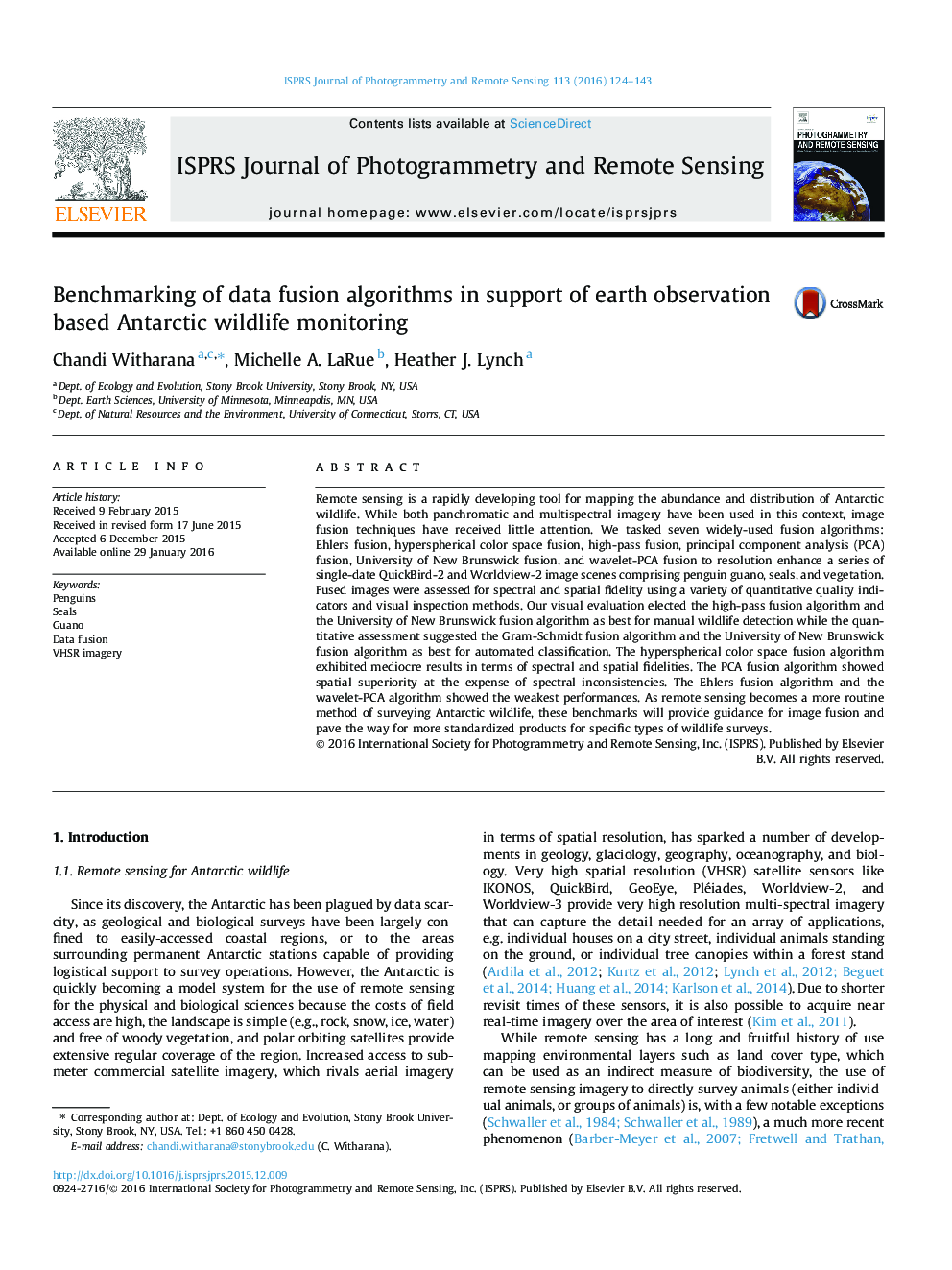| Article ID | Journal | Published Year | Pages | File Type |
|---|---|---|---|---|
| 555012 | ISPRS Journal of Photogrammetry and Remote Sensing | 2016 | 20 Pages |
Remote sensing is a rapidly developing tool for mapping the abundance and distribution of Antarctic wildlife. While both panchromatic and multispectral imagery have been used in this context, image fusion techniques have received little attention. We tasked seven widely-used fusion algorithms: Ehlers fusion, hyperspherical color space fusion, high-pass fusion, principal component analysis (PCA) fusion, University of New Brunswick fusion, and wavelet-PCA fusion to resolution enhance a series of single-date QuickBird-2 and Worldview-2 image scenes comprising penguin guano, seals, and vegetation. Fused images were assessed for spectral and spatial fidelity using a variety of quantitative quality indicators and visual inspection methods. Our visual evaluation elected the high-pass fusion algorithm and the University of New Brunswick fusion algorithm as best for manual wildlife detection while the quantitative assessment suggested the Gram-Schmidt fusion algorithm and the University of New Brunswick fusion algorithm as best for automated classification. The hyperspherical color space fusion algorithm exhibited mediocre results in terms of spectral and spatial fidelities. The PCA fusion algorithm showed spatial superiority at the expense of spectral inconsistencies. The Ehlers fusion algorithm and the wavelet-PCA algorithm showed the weakest performances. As remote sensing becomes a more routine method of surveying Antarctic wildlife, these benchmarks will provide guidance for image fusion and pave the way for more standardized products for specific types of wildlife surveys.
